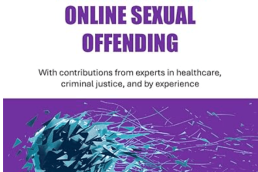A peer-reviewed article written by Darryl Mead PhD and Mary Sharpe, Advocate, has been published in Sexual Addiction and Compulsivity. This Taylor & Francis journal is supported by the Society for the Advancement of Sexual Health in the USA and the Association for the Treatment of Sexual Addiction and Compulsivity in the United Kingdom.
In February 2017 team TRF attended an international academic conference in Israel that presented the very latest research into the various impacts of internet pornography. Given the importance of this subject to the therapist community and to pornography research academics, we compiled an article to help distribute this new research on behavioural addiction to these communities.
Pornography and Sexuality Research Papers at the 4th International Conference on Behavioral Addictions was published in Sexual Addiction and Compulsivity online on 13 September 2017. It will appear in print in Volume 24, Number 3, 2017. The Editor, Professor Stephen Southern had this to say about our work in his editorial article…
“The review of pornography and sexuality research papers from the 4th International Conference on Behavioral Addictions (Mead & Sharpe, 2017). Pornography and sexuality research papers at the 4thinternational conference on behavioral addictions affords a glimpse of the serious attention directed at the worldwide proliferation of pornography. There were discussions about adequate nomenclature with an apparent preference for the label “problematic” or “compulsive” use, which is consistent with the compulsive sexual behavior disorder classification evolving in the ICD-11. The mix of scientific and clinical sessions related to sexual compulsivity topics signified that specialists in behavioral addictions take seriously the international concerns about effects of pornography.”
ABSTRACT
Building on the legacy of the three previous conferences since 2013, the 2017 International Conference on Behavioral Addictions (ICBA) offered one of the largest selections of original academic research into compulsive sexual behaviour and pornography use ever presented. This review gives a flavour of the best papers and the key contributions to our fast-evolving understanding of compulsive sexuality and pornography use. This report is not fully comprehensive as the use of parallel sessions meant that we could not see all relevant papers. The Journal of Behavioral Addictions has published all abstracts in a special edition (volume 6, supplement 1).
A single strand of the parallel sessions was wholly dedicated to research into sex and pornography. Taken collectively, the presentations demonstrated the strengths of several national research teams, in particular those from Germany, Poland, Hungary, Israel, and the United States. The plenary given for the sexual strand by Matthias Brand explored the I-PACE model (Interaction of Person-Affect-Cognition-Execution) in specific Internet addictions, including for cybersex addiction. This suggested that the theoretical framework for studying and understanding sexual addictions is becoming more mature and robust.
If you would like to read the full paper, it is available as a free download from the publisher with this link.

In other news, the 2016 paper co-authored by Gary Wilson, our Honorary Research Officer, with a team of US Navy Doctors, continues to be cited in the work of other researchers. Two new papers referencing Park et al, 2016 (Is Internet Pornography Causing Sexual Dysfunctions? A Review with Clinical Reports (2016) appeared in the same edition of Sexual Addiction and Compulsivity as the TRF article. The citations are:
Reflections on Sexual Health: Fraught Intimacies and Ethical Choices
“Such a stimulus has the potential for replacing the value of sexual experience with a real partner. Novelty and ease of access in pornography may contribute to risk of problematic sexual behavior in vulnerable users. Excessive pornography use, including self-perceived pornography addiction, contributed to feelings of isolation and relationship difficulties (Duffy, Dawson, & das Nair, 2016). Park et al. (2016) reported increasing sexual dysfunction in young men associated with Internet pornography: decreased interest in partner-oriented sex and sexual satisfaction, delayed ejaculation, and erectile dysfunction. Limitless novelty and ease of progression toward extreme materials can condition sexual arousal away from interest in an intimate, real-life partner toward isolating use of a device that produces physical dysfunction and psychological distress (Park et al., 2016).”
“Abstinence from pornography
There has been a relative dearth of research in the literature on abstinence from pornography. However, in recent years there have been a handful of studies and clinical reports in which the effects of abstinence from pornography were explored. For example, there have been recent clinical reports where pornography users were asked to abstain from IP for relief of sexual dysfunctions associated with their pornography use, including low sexual desire during partnered sex (Bronner & Ben-Zion, 2014), erectile dysfunction (Park et al., 2016; Porto, 2016), and anorgasmia (Porto, 2016). In the majority of these cases, abstaining from IP provided relief from their sexual dysfunction. Beyond these clinical reports however, abstinence from pornography has rarely been investigated systematically in academic work and is a new variable within scientific research.”




